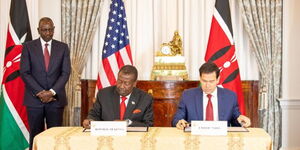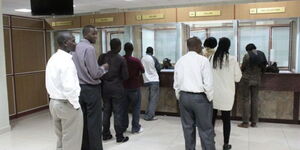Kisumu City is soon to become a major trade hub in the East African region following the refurbishment of the old rail network from Nakuru.
The rehabilitation of the rail lines which began in August 2020, is nearing completion as the project timeline had been set at 8-12 months.
The more than 100 years old track has not been utilized for the last two decades.
According to Kenya Railways, the decision to upgrade the old rail line came after the Kenyan government dropped its plan to extend the Standard Gauge Railway (SGR) to Kisumu and later on to the Ugandan border.
This was after the government failed in its bid to secure a multi-billion shilling loan from China, which funded the first and second phases of the project.
The rehabilitation of the Ksh3.7 billion rail project is being handled by the Kenya Defence Force (KDF) in partnership with the Kenya Railways Corporation.
KDF is managing the project, while the Kenya Railways has been providing the required materials. The National Youth Service on the other hand has been in charge of clearing bushes along the line.
The 216km line will connect to the recently refurbished Ksh3 billion Kisumu port, which will enable the ferrying of cargo and passengers to Uganda, Rwanda, Burundi, and the Democratic Republic of Congo on ships via Lake Victoria with relative ease.
In turn, this boost in cargo handling capability is set to transform the economy of the lakeside city.
The Port of Kisumu remains one of the governments key priority projects as it would make the Trans-African Highway a practical route from Lagos to Mombasa, Mombasa to Kisumu, Kisumu to Port Bell, Port Bell to Democratic Republic of Congo (DRC), DRC to the Central African Republic, and then to Cameroon and back to Lagos.
The old railway line, which had a thriving passenger service in the 1990s, will become a major supply route to deliver cargo to the neighbouring countries.
The track from Nakuru goes through Njoro, Londiani, Muhoroni and terminates at Butere.
Once complete, passengers from Mombasa and Nairobi are also set to enjoy the reliability of train services, with stopover towns along the great rift valley expected to record increased economic activity.
The rehabilitation of the railway line has been gathering momentum with the process expected to be complete by April 2021.
The idea of a railway from Mombasa to Kisumu came about in the late 1880s when both Germany and Britain were actively interested in acquiring territory in the region.
In December 1895, George Whitehouse stepped ashore at Mombasa in May 1896, and oversaw the laying of the first rails of the project that would become known as the’ Lunatic Line’’.
Its name was coined in a speech in Parliament in London regarding the ever-increasing costs of what appeared to be a futile exercise.
The line finally reached Lake Victoria in December 1901.
On reaching the lake at Kisumu, passengers would take a steamer to Port Bell in Uganda before preceding by road to Kampala.












